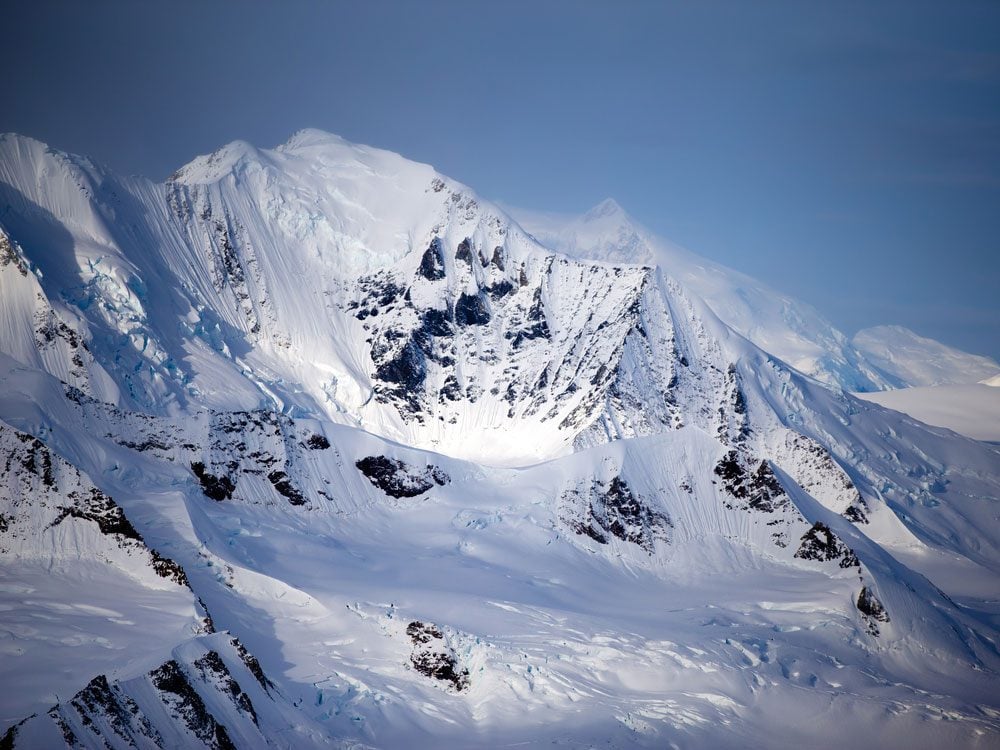
Mount Logan: Avalanche!
It was 5 a.m. on May 1, 2017, and Natalia Martinez sat in her tent in the Yukon, boiling water from snow she’d chipped from the side of Canada’s highest mountain. She was 3,901 metres above the sea, perched on a hanging glacier two-thirds of the way up the east ridge of Mount Logan. The Argentinian climber was still three days from the peak. The night had been cold, -10 C. But now the Arctic sun was rising slowly, a drawn-out dawn soon to glow through the frost-covered canvas of her tent.
Once the water had heated up, Martinez turned off her camp stove, poured a cup of tea and began mixing oatmeal, just as she’d done every morning for the past 10 days.
The 37-year-old ate a spoonful of oats and reflected on the dangers ahead. Another 600 metres of pushing and pulling both body and gear up the frozen ridge and she’d reach the summit plateau. From there it would be a six-kilometre trek, sidestepping the deadly crevasses and fragile cornices of a cracking glacier on her way to the top of the mountain. Only then would she become the first woman to reach Logan’s peak solo. She was so close.
Martinez was nearing the end of her meal when the ice and snow beneath her tent began to shake. Then Logan began to roar, and in that moment it felt to the climber as if both she and her tent were going to be wiped clear from the ridge.
Dive into another tale of survival with this polar expedition gone horribly wrong.
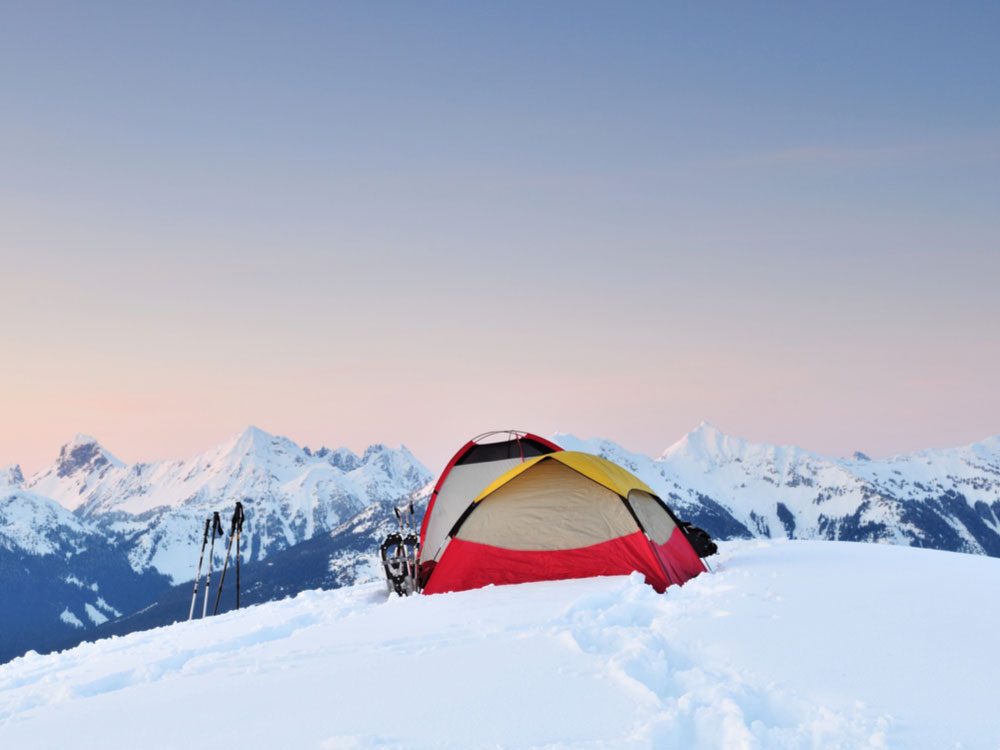
Mount Logan: Calling for Help
It was 5 a.m. some 2,500 kilometres southeast in Whistler, B.C., too. Camilo Rada, Martinez’s partner, was in their apartment, sleeping lightly, when his phone rang. He’d been with Martinez for 10 years, long enough to know that she’d only call at this hour if there was an emergency.
Rada shot up as Martinez shouted into her satellite phone that something was terribly wrong—but then she paused in confusion. Logan had gone quiet. Martinez was certain her tent had been unmoored from the ridge by an avalanche. She sat still, terrified that any sudden movement meant her death.
Rada listened, fearful, as Martinez worked up the courage to survey the damage. She promised to call her partner back, then hung up and unzipped her cocoon.
Fifteen minutes later, Martinez phoned Rada again, still perturbed but calmer. She was standing outside her tent and as far as she could tell, it hadn’t moved. But many of the narrow snow bridges that had straddled the mountain’s crevasses had collapsed, replaced by loosely packed snow that had been pushed over the crevasses and now concealed their hazards.
And yet Logan seemed tranquil. The only sound Martinez could hear was that of a westerly wind funnelling around the mountain as an arctic storm rolled in off the Pacific.
“I’m going to pack up and go higher,” she told Rada. “I don’t feel safe here.”
She hung up and crawled back into her tent. As she began rolling up her sleeping bag, the mountain rumbled to life once more.
Don’t miss this story of a disastrous father and son rock climbing trip.
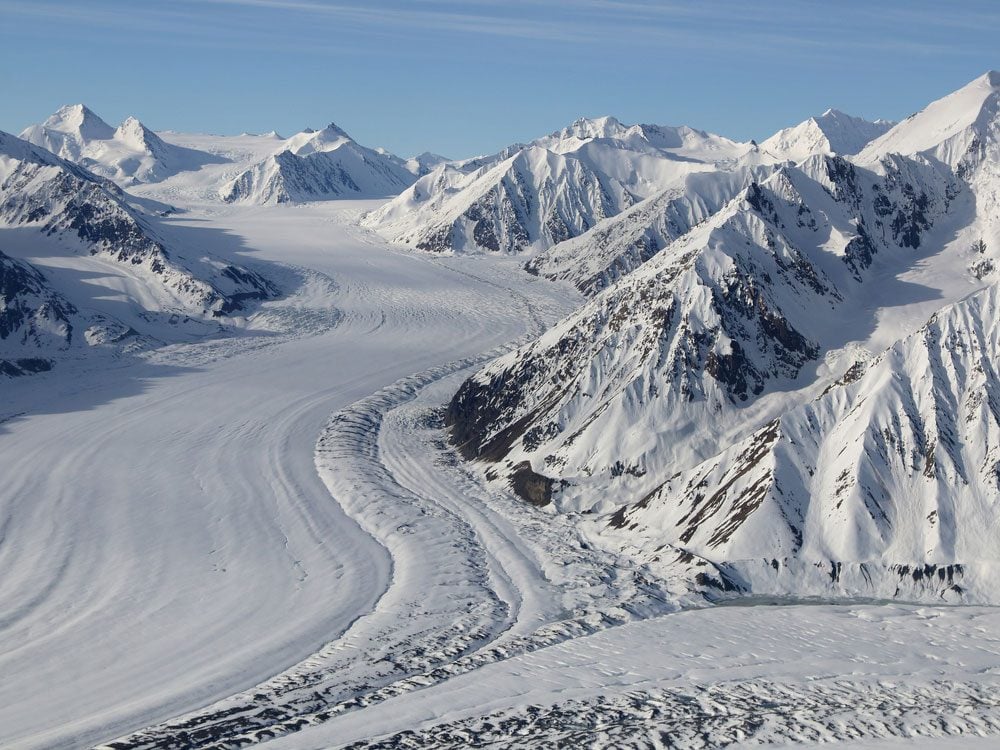
Mount Logan: Planning the Climb
Martinez had dreamed of scaling Logan since she’d first glimpsed its massive ice walls and protruding ridges from the neighbouring Mount Malaspina. Until August 15, 2015, the day Martinez and Rada reached its summit, Malaspina had been the highest unclimbed named mountain in North America. But even it was dwarfed by Logan, which stood supreme over the horizon.
Logan’s colossal beauty wasn’t the only thing that attracted Martinez, nor was it the technical difficulties. It was that no woman, or team of women, had ever scaled the mountain.
In 2007, Martinez, who had been climbing since the age of 15, met Rada during a wilderness first-aid course on the Argentinian border with Chile. They fell in love and were soon belaying each other up and down walls in the Andes and the Himalayas.
When Rada enrolled at the University of British Columbia in 2011 to study geophysics, the couple moved to the Canadian Rockies, settling near Whistler so they could use the surrounding mountains and cliffs as a training ground.
It was four years later, on Malaspina, that Martinez told her partner of her intention to climb Mount Logan with a female friend—and without him.
For more cold-weather chaos, check out stranded in a Manitoba snowstorm.
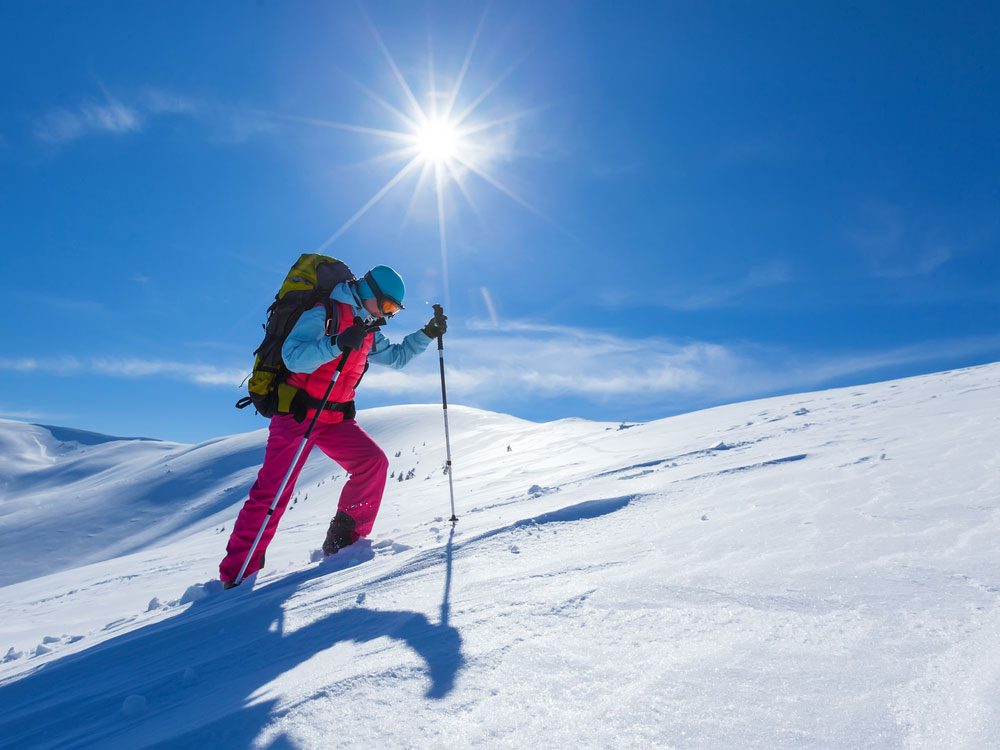
Mount Logan: Touching Down
For the next two years, while working as a mountain guide and ski instructor, Martinez studied Logan, immersing herself in its geography and history. She knew there were risks: in 1987, accomplished climbers Catherine Freer and David Cheesmond died when a cornice broke off. Annually, an average of 25 climbers try to scale the mountain, and not all of them succeed. In the last five years, four had required evacuation.
Martinez formalized her plans. The friend she had hoped to climb with could no longer make the journey, so she would traverse Logan’s 38.6-kilometre length from east to west alone, exposed to the winds and storms that make the mountain one of the coldest places on earth. While gaining 3,819 metres in elevation, she would need to choose her every step carefully and successfully navigate the treacherous ridgeline known as the “knife’s edge.” From there, she would reach the summit and begin the long descent via the mountain’s western face.
At 11 a.m. on April 20, 2017, Martinez kissed Rada goodbye at the Vancouver Airport. Flying first to Whitehorse, she then travelled by car to the entrance of Kluane National Park and Reserve. There she hired Tom Bradley, a bush pilot with a single-engine propeller plane on skis, to take her the rest of the way to Logan. They touched down on the glacier at the eastern base of the Logan massif on April 22.
The sky was clear as she clipped into her skis and began dragging her 80 kilograms of gear by sleigh. It took two days to reach the base of the east ridge. She pitched her camp and lay alone with her thoughts. She knew this climb meant more to her than to anyone else. There wasn’t much attention on her, just Rada and a few friends monitoring her progress through the coordinates she was posting online via the satellites circling overhead.
On the third day, she strapped her crampons to her boots, took out her ropes, fixed her ice axe in her hand and began scaling a 60 degree incline lined with concealed crevasses. On the sixth night, she reached the knife’s edge, a near vertical stretch of the ridge that requires climbers to cling precariously to the side of a cornice, reliant on the mountain’s frozen crust not breaking away beneath their weight.
By the eighth night, she was above the knife’s edge. She pulled out her shovel, built a wall out of snow and ice to shield her tent from the wind, then set up camp. The sun was hovering low in the sky on the other side of the mountain by the time she closed her eyes.
Here are three tales from Canadians whose adventures turned into misadventures.
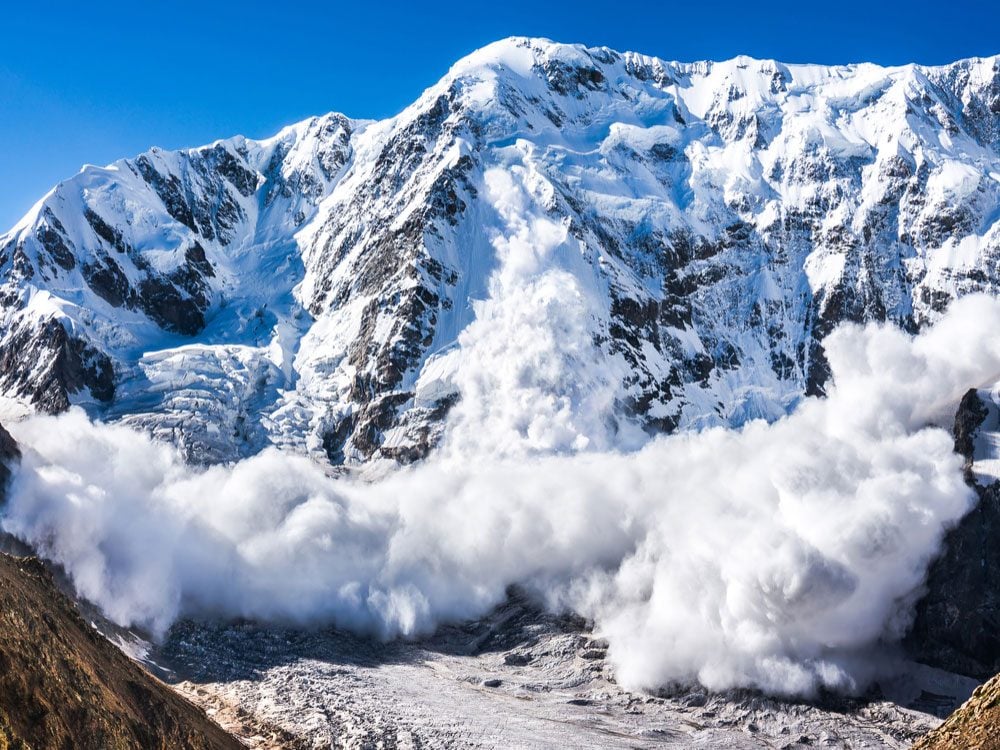
Mount Logan: Tackling the Storm
It is Logan’s location near the confluence of two tectonic plates and a smaller microplate—a fragment of the earth’s crust, broken off from the Pacific floor—that accounts for its impressive mass and size, the result of millions of years’ worth of tectonic shifts.
At 5 a.m. on May 1, while Martinez ate her breakfast, a magnitude 6.2 earthquake was detected near Logan. It had been strong enough to shake the mountain’s crust, triggering avalanches and rendering it impossible to climb.
In the moments after the first earthquake, Martinez had thought it safest to continue her ascent toward the summit plateau. After the second earthquake, and with 130-kilometre arctic winds coming in from the Pacific, she believed it wiser to go back down to a more shielded section of the ridge. She moved cautiously into a thickening cloud. Trying as best she could to retrace her footsteps over the knife’s edge, Martinez battled self-doubt and growing terror as she lost the trail in the snow and fog.
Martinez had descended roughly 300 metres when she was forced to set up camp. She pitched her tent near a crevasse, figuring that if the storm blew her shelter apart, she could lower herself into the fissure to dangle in darkness and wait for the weather to break. After zipping herself inside the tent, Martinez set a rolling alarm: every two hours, she’d go outside in the battering wind to clear the snow from the canvas to prevent a collapse.
“My tent is my castle,” she told herself aloud, an encouragement and a reminder.
Her diligence kept her safe into the next day. Periodically, she could hear her satellite phone ringing beneath the sound of the storm. It was always Rada or the Kluane Park officials waiting for a window to mount a rescue. The nature of Martinez’s location made a retrieval operation difficult. The only way to get her off the mountain was to send a chopper, but the weather was far too dangerous to navigate by air. Martinez had no choice but to hang on.
The pressure of the storm was bending the tent’s poles, threatening to collapse the shelter. Martinez raised her hands above her head and transferred the strain from the poles onto herself. When her arms were too tired, she switched position and used her head. When she couldn’t do that any longer, the climber got on her hands and knees and arched her back into the canvas.
Throughout the night, Martinez grew weaker. She couldn’t eat or drink for fear her tent would collapse, and she would be forced to abandon it to take her chances in the nearby crevasse.
Back at their apartment in Whistler, Rada prepared himself for an emotional flight to Whitehorse. He had planned to greet Martinez in Kluane Park on May 6 after she completed the traverse and let her know how much her accomplishment meant. Instead he was fielding calls from local and international media, none of whom had cared about the first female solo expedition on Logan until disaster loomed.
Find out how one man was nearly crushed to death in a corn silo.
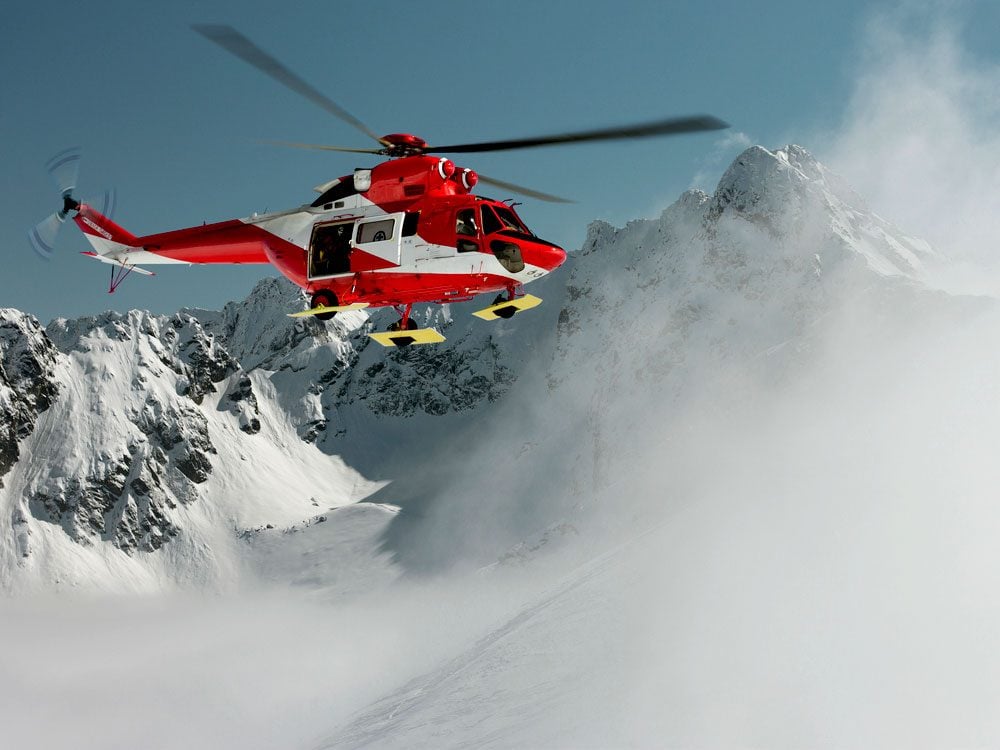
Mount Logan: Waiting for Rescue
On the afternoon of May 3, the tempest finally subsided. After 24 hours of holding up her shelter, an exhausted Martinez was at last able to lie down. Visibility was still poor. She knew from talking to Rada that another storm was approaching and wondered how much more of a beating her tent and body could take.
That same afternoon, Tom Bradley, the pilot who’d dropped Martinez at the base of the mountain, flew back toward Logan in service of two clients who wanted a panoramic view of the mountains. It was Bradley who first noticed a break between the storms battering the east ridge and notified the park rangers.
Around 7 p.m., as Martinez was about to shut her phone off for the night to preserve its dwindling battery, she got a text from Rada telling her to call the park’s headquarters. Scott Stewart, the visitor safety and fire operations coordinator, wanted her to be ready within the hour. Stewart had been monitoring Martinez’s situation since the initial earthquake woke him in Whitehorse, nearly 300 kilometres from Logan. But he’d been unable to orchestrate a rescue while the winds pounded the mountainside. Now he was airborne, alongside Ian Pitchforth, a Whitehorse-based helicopter pilot, and two other parks officials. For an hour they flew toward Logan, watching it grow until it was all that they could see through the cockpit window.
Meanwhile, on the east ridge, Martinez packed up her tent and tried to dig out a flat landing pad for her rescuers’ arrival. Looking around, she got her first proper glimpse of her surroundings in days—the cracks in the ice and snow told her of the avalanches that had surrounded her.
Then came the sound of blades cutting through the air, echoing off the peaks and through the valley below. The chopper hovered low, circling Martinez as she crouched in the snow. Twice Pitchforth tried to land next to the climber only to be blinded by a powder cloud of snow caused by the propellers. On the third attempt, he touched the front of the aircraft’s landing skids on the mountainside. Stewart unbuckled and stepped out and onto Logan to help Martinez. In less than a minute her gear was on board, and so was she.
Here are 11 mind-blowing facts about snow you never knew until now.
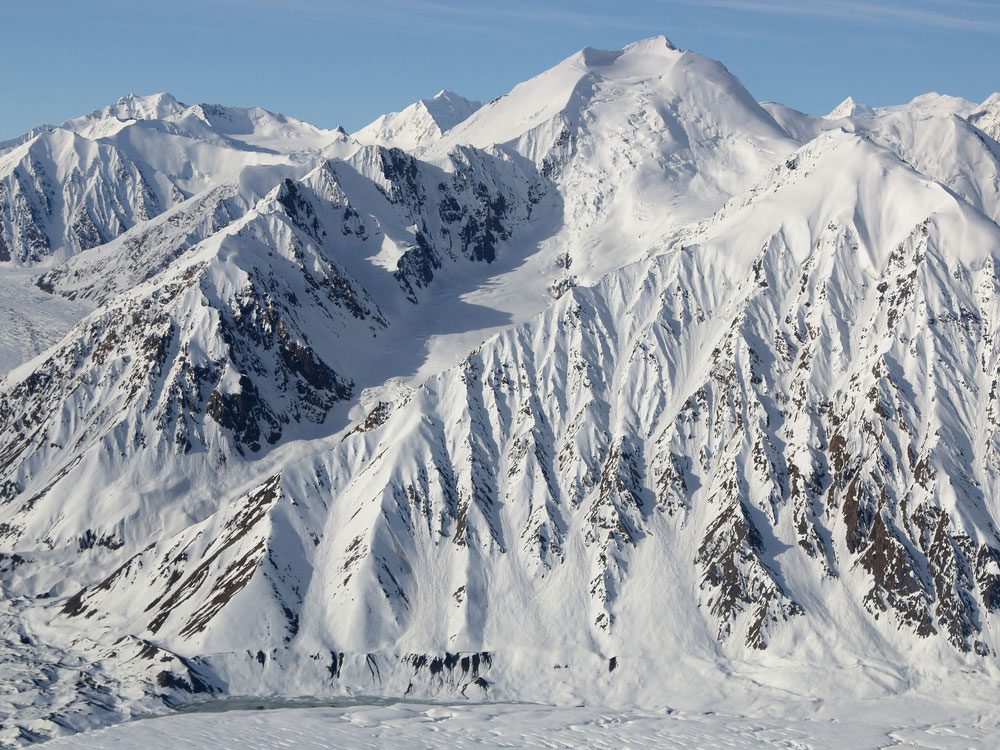
Mount Logan: A Near-Death Experience
Following her ordeal, Martinez was shocked by the amount of news coverage she’d received from the Canadian and Argentinian press. She was humbled by the attention and yet dismayed it had taken a near-death experience to attract notice. “If the earthquake hadn’t happened, nobody would have known that I was even climbing the mountain,” she says. That fact strengthened her resolve even more.
Since the rescue, she and Rada have already made it to the summit of an unclimbed peak in Patagonia. They named it Enroque, the Spanish word for “castling” in chess, a fortification move and the only one where two pieces can proceed at once.
Watching the sun set on the Pacific Ocean while achieving a historic first was magical, but it wasn’t enough.
Logan still calls out to Martinez.
One day, she says, she’ll finish the climb.
Plus: 20 Fixes for Life-Threatening Problems and Daily Hassles